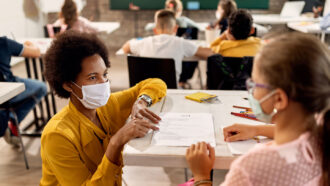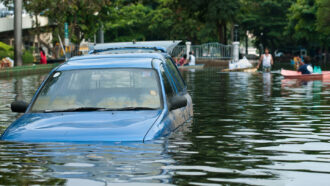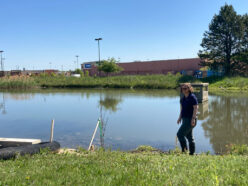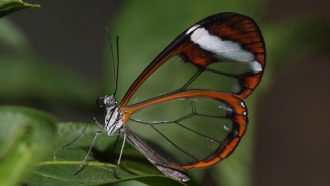Engineering Design

Educators and Parents, Sign Up for The Cheat Sheet
Weekly updates to help you use Science News Explores in the learning environment
Thank you for signing up!
There was a problem signing you up.
-
 Environment
EnvironmentWildfire smoke seeds the air with potentially dangerous microbes
Studies now show that most wildfires don’t kill microbes. That’s fueling worries about what risks these smoke hitchhikers might pose to people.
By Megan Sever -
 Animals
AnimalsAnalyze This: Sharks aren’t as scary as what you see on TV
In Shark Week shows, scientists found mixed messages about sharks, insufficient research support and little info on conserving endangered animals.
-
 Tech
TechLet’s learn about artificial intelligence
Computers are getting smarter all the time. At some tasks, they can even outsmart people.
-
 Tech
TechHeadphones or earmuffs could replace needles in some disease testing
A new system that uses earmuffs to collect gases coming out the skin could help doctors diagnose a variety of diseases, scientists say.
By Sid Perkins -
 Animals
AnimalsEndangered or just rare? Statistics give meaning to the head counts
Whether studying tiny birds or massive whales, researchers collect a lot of data. The field of statistics helps them make sense of those data.
-
 Health & Medicine
Health & MedicineWhat is the role of in-person classes in COVID-19’s spread?
New data haven’t shown that schools pose a big coronavirus risk to kids and their families, despite fears that they might.
-
 Environment
EnvironmentWarming cities may see more rain — and frequent flooding
Scientists are seeking to understand why and how to mop up excess precipitation.
-
 Earth
EarthStores and malls buy into ponds and rain gardens for flood control
An extra bonus: These rainy-day ponds clean up that dirty water running off parking lots.
-
 Chemistry
ChemistryNew glue offers to turn any small walking robot into Spider-Man
To climb walls, robot feet need to alternately stick and let go. A novel adhesive can do that. Its stickiness is controlled by electric fields.
By Shi En Kim -
 Chemistry
ChemistryLots of makeup may contain potentially harmful ‘forever chemicals’
Hints of PFAS compounds have turned up in about half of tested makeup products. Waterproof mascaras and lipsticks were very likely to contain them.
-
 Humans
HumansHow torchlight, lamps and fire illuminated Stone Age cave art
Experiments with stone lamps and torches are helping scientists see 12,500-year-old cave art with fresh eyes.
-
 Animals
AnimalsUncovering secrets of the glasswing butterfly’s see-through wings
The tricks of its transparency include sparse, spindly scales and a waxy coated membrane.